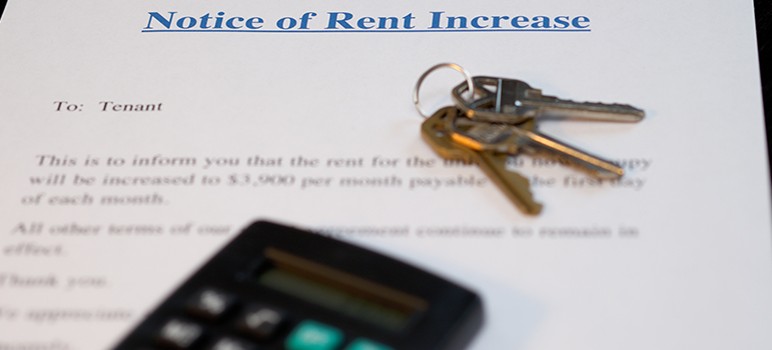A local community leader wants San Jose to explore ways to sustain small businesses, which, like the people who staff them, face soaring rents in Silicon Valley.
In a letter to city officials, Julie Borinas Driscoll said that in addition to seeking federal aid through the Small Business Administration, San Jose should figure out other ways to limit rent increases for mom-and-pop shops.
“Otherwise,” she wrote, “there will be no small businesses, backbone to our nation’s economy around. Small business is important in America.”
While some municipalities—most recently New York City—have flirted with the idea of commercial rent control to stave off gentrification, it has no known precedent in the U.S. In California, the proposal would require a change in state law.
In the 1980s, Berkeley enacted commercial rent caps, which prompted 20 other cities in the state to consider similar ordinances. But the state Legislature responded in 1987 with SB 692, which outlawed rent caps on all non-residential commercial property.
Driscoll’s proposal was included with other public correspondence on Wednesday’s Rules and Open Government Committee, but there’s no formal recommendation as of yet. She also submitted a letter to Santa Clara County’s Board of Supervisors.
A general partner of the Borina Trust and Enterprises, Driscoll said she felt compelled to pitch her idea after seeing Gene’s Fine Foods in neighboring Saratoga close after four decades in business. Its 20-year lease was up and the landlord was poised to raise rent to market rate, according to KTVU. The news report noted, however, that Gene’s owner, who unsuccessfully tried selling the store, had already decided to retire anyway.
San Jose’s De La Cruz Deli met the same fate this past spring, closing the last of its 12-store chain after 41 years in business. Owner Randy Nelson told the Mercury News that, along with rising labor costs, he faced a 50 percent rent hike.
Whether through commercial rent control or not, Driscoll said local governments should figure out a way to help struggling small businesses to prevent similar losses. She said disadvantaged small businesses could benefit from some combination of rent caps, impact fees from high-rise development, corporate subsidy tax and federal grants.
Otherwise, she warned: “We run the risk of losing every small privately owned business in Santa Clara County because of rents doubling, exorbitantly, whereas, it is no longer profitable to economically stay in business.”


> have flirted with the idea of commercial rent control to stave off gentrification,
Could someone explain WHY we want to “stave off gentrification”?
Who is it that thinks we need to “stave off gentrification”?
So, is Liccardo going to run for reelection on a platform of “Save Our Slums”?
Ms Driscoll:
“We run the risk of losing every small privately owned business in Santa Clara County because of rents doubling, exorbitantly, whereas, it is no longer profitable to economically stay in business.”
That’s wrong. Because if that was the case, property owners would get no income. That makes no sense.
What will happen is what always happens: some businesses will deal with the rent increase, and some will fold. Businesses that are well run will handle it like they deal with every other bump in the road. But the ones that are already close to failing will probably close their doors, making way for new businesses that want to move in at current rents. Economist Joseph Schumpeter called it “creative destruction.”
Rent control for failing businesses is a bad idea because it rewards failure. Survival of the fittest applies in the retail world, too. The result is a healthier local economy.
various properties with small business’ are getting bought up shoved out of this valley; the culprits are largely developers (condos- see San Carlos Street) and tech companies. Other small biz properties having been sitting vacant for years – see downtown – for tax purposes – I know several business’ that have been forced to more multiple times in a 3-4 year period. Look for retail downtown – not even a place to buy a nice suit of clothes, socks, shoes (except in a mall) – its becoming more and more high density housing and tech.
sure some business can survive by raising prices – – so forget getting those shoes fixed – toss them out – buy new. San Jose still has a Mayberry mindset but we’re living in an Uber/gig world now and we’re in danger of losing much of what makes us San Jose.
Just what is it that “makes us San Jose” that you are in fear of losing?
Good question – pretty much all that was San Jose – is pretty near gone. We have few iconic landmarks – no stunning bridge or vistas, just a handful of interesting old buildings, and they are nothing special. we used to have a Richardsonian Romanesque clock tower at the old Post Office (now art museum) but that’s been missing for a century .there used to be a dancing pig sign by the train station.. Orchards are gone, with subdivisions and shopping malls in their place – for the oldest city in California we do seem to grapple w/ identity, going from Valley of the Hearts Delight to Silicon Valley – – – I guess what makes us San Jose is that we’re that place by – you know – – -San Francisco – –
Protecting businesses is important if we want to protect the millions of jobs they create every year. Make sure you let the folks running for state office know this is an issue you care about before donating to their campaigns. We can do better in Sacramento.